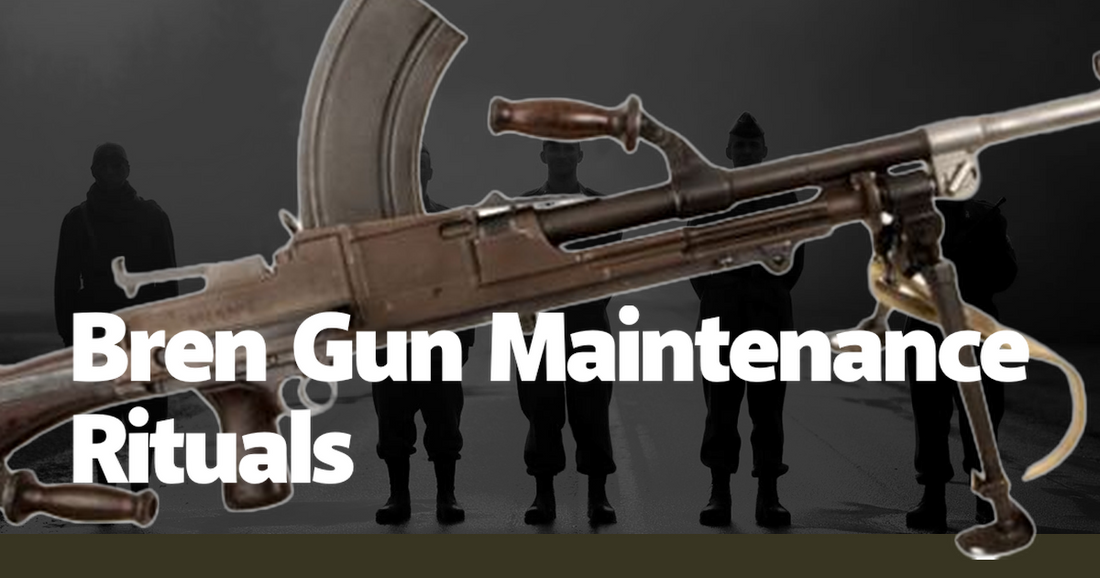In the annals of military history, few weapons have achieved the legendary status of the Bren gun. Known for its reliability and accuracy, the Bren was a staple in the arsenals of British and Commonwealth forces during World War II and beyond. However, the true secret to its enduring success lay not just in its design but in the meticulous maintenance rituals performed by the soldiers who wielded it. These rituals were more than mere routines; they were acts of reverence, ensuring the Bren remained a steadfast companion in the chaos of battle.
The first step in the maintenance ritual was the disassembly of the Bren gun. Soldiers were trained to take apart the weapon with the precision of a surgeon, ensuring each component was carefully inspected. The process began with the removal of the magazine, followed by the barrel, and then the bolt. Each part was laid out in a specific order, a practice that was drilled into the soldiers during their training. This methodical approach ensured that no part was overlooked and that the reassembly process would be seamless. For many, this ritual became a meditative practice, a moment of calm amidst the storm of war.
Cleaning the Bren gun was an art form in itself. Soldiers used a combination of brushes, cloths, and specially formulated oils to remove the grime and residue that accumulated during use. The barrel, in particular, required special attention. Using a pull-through, a cloth patch soaked in oil was drawn through the barrel to remove any fouling. This process was repeated until the cloth emerged clean, a testament to the soldier's diligence. The bolt and other moving parts were similarly treated, ensuring that the weapon would function smoothly when called upon. Anecdotes abound of soldiers spending hours perfecting their cleaning techniques, knowing that their lives depended on the reliability of their Bren.
Lubrication was the next crucial step. The Bren gun's moving parts required a fine balance of lubrication to prevent wear and ensure smooth operation. Soldiers used a light oil, applied sparingly to key areas such as the bolt and the gas piston. Too much oil could attract dirt and cause malfunctions, while too little could lead to excessive wear. This delicate balance was a skill that had to be learned through experience, and seasoned soldiers often passed down their knowledge to new recruits. The importance of proper lubrication was underscored by countless stories of weapons jamming at critical moments, a fate no soldier wanted to face.
Inspection was the final step in the maintenance ritual. Each component was scrutinized for signs of wear or damage. The barrel was checked for pitting or erosion, the bolt for any signs of cracking or deformation, and the magazine for dents or other issues that could impede feeding. This thorough inspection ensured that any potential problems were identified and addressed before they could become critical. Veterans often spoke of the satisfaction that came from knowing their weapon was in peak condition, ready to perform when it mattered most.
Beyond the technical aspects, the maintenance rituals of the Bren gun fostered a deep sense of camaraderie among soldiers. These sessions often became communal activities, with soldiers gathering to share tips, stories, and the occasional joke. The shared experience of maintaining their weapons created bonds that transcended rank and background. In the quiet moments of cleaning and inspection, soldiers found solace and a sense of purpose, knowing they were contributing to the effectiveness of their unit.
The rituals surrounding the Bren gun also served as a form of psychological preparation. The act of maintaining their weapons allowed soldiers to mentally prepare for the challenges ahead. It was a time for reflection, a moment to focus on the task at hand and set aside the anxieties of battle. This mental preparation was as crucial as the physical readiness of the weapon, providing soldiers with the confidence they needed to face the uncertainties of combat.
In the heat of battle, the benefits of these maintenance rituals became evident. The Bren gun's legendary reliability was a direct result of the care and attention lavished upon it by its operators. Soldiers knew that their meticulous efforts could mean the difference between life and death. Stories of Bren guns continuing to function flawlessly under the most extreme conditions became part of military lore, a testament to the effectiveness of the maintenance rituals. These tales were passed down through generations, reinforcing the importance of proper weapon care.
Today, the legacy of the Bren gun and its maintenance rituals continues to be honored by military historians and enthusiasts. The principles of meticulous care and attention to detail remain relevant, serving as a reminder of the dedication and professionalism of the soldiers who relied on the Bren. While modern weapons have evolved, the timeless lessons of the Bren gun's maintenance rituals endure, a tribute to the enduring bond between a soldier and their weapon.

